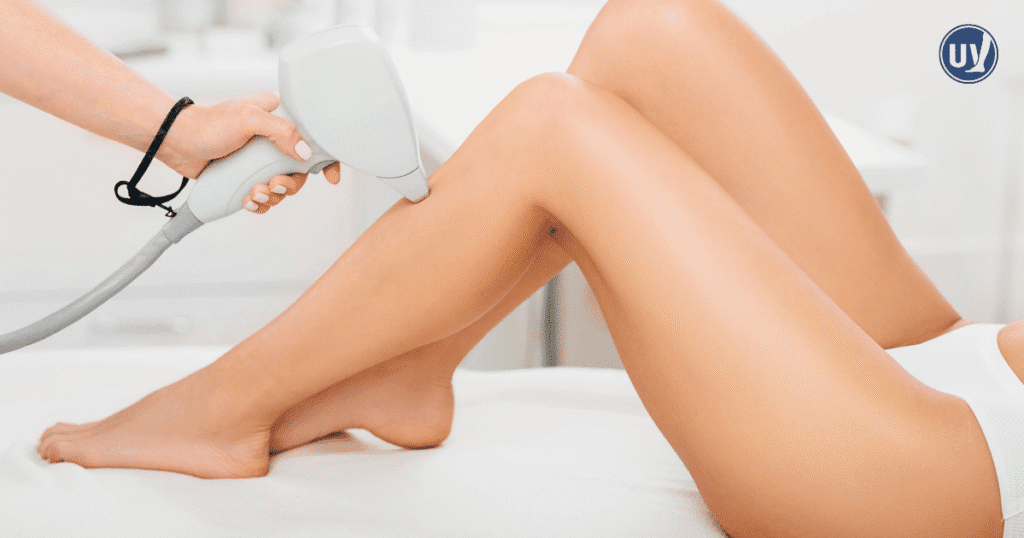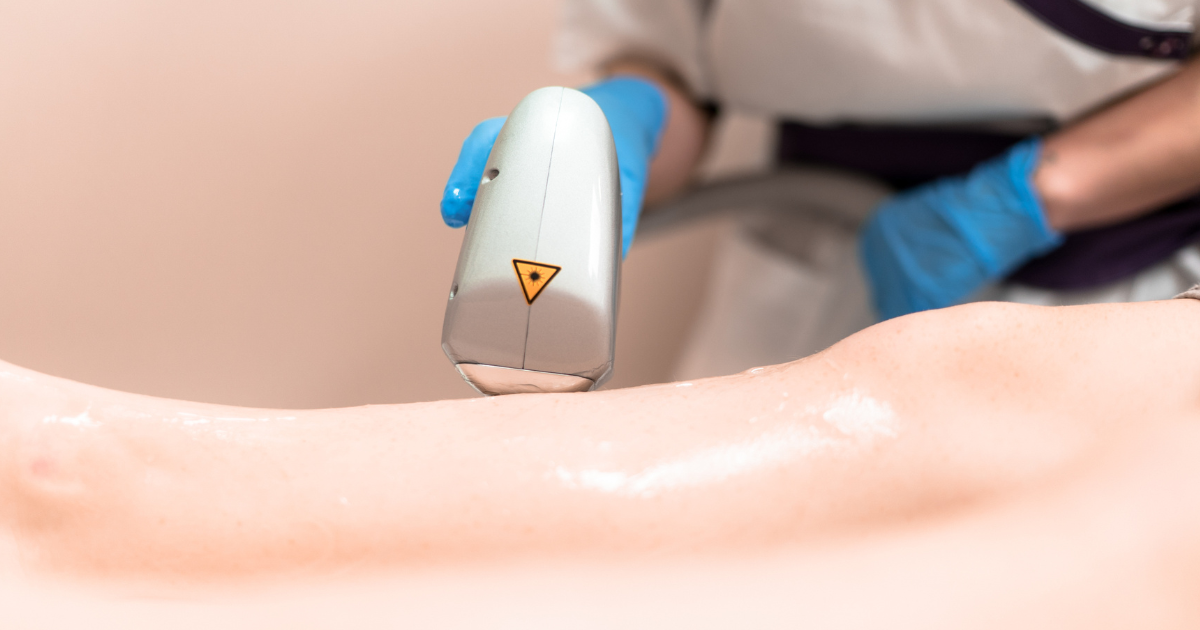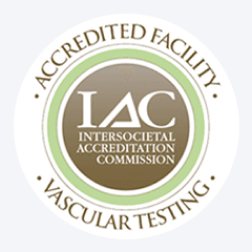Contents
- Understanding EVLT: The Basics of Laser Vein Treatment
- The First Week: Immediate Post-Procedure Recovery
- EVLT Recovery Tips for the First Month
- Managing Discomfort and Monitoring for Complications
- Returning to Normal Activities: What to Expect
- Long-Term Healing: Months 2–12 After EVLT
- Lifestyle Changes for Lasting Vein Health
- When to Contact Your Healthcare Provider
- Frequently Asked Questions
If vein issues have been affecting your comfort or confidence, Endovenous Laser Treatment (EVLT) offers a minimally invasive solution with faster recovery than traditional surgery. But what happens after the procedure?
The first year after EVLT can be full of changes, some subtle, some noticeable. From the initial days of recovery to the months that follow, understanding what your body may experience helps you feel prepared and confident.
With the right care and knowledge, you can support lasting vein health, enjoy smoother legs, and move through recovery with ease. Knowing what to expect is the first step toward reclaiming comfort and confidence in your veins.
Understanding EVLT: The Basics of Laser Vein Treatment
Endovenous Laser Treatment (EVLT) is a cutting-edge approach for treating varicose veins. This technique uses laser energy to target and close off the affected veins. The procedure is minimally invasive and typically performed on an outpatient basis.
The benefits of EVLT over traditional surgery are significant. These include:
- Shorter recovery time
- Minimal scarring
- Reduced pain and discomfort
It’s important to understand the process before proceeding. Your healthcare provider will insert a laser fiber into the vein through a small incision, guiding the energy to close the vein. This effectively reroutes blood flow to healthier veins, alleviating symptoms and improving your quality of life.
The First Week: Immediate Post-Procedure Recovery
Your journey toward recovery begins immediately after the EVLT procedure. Most patients find they can leave the clinic shortly after it concludes. This quick turnaround is one of the many benefits of choosing EVLT for varicose veins.
In the first week, expect some mild discomfort or bruising. This is normal and typically resolves quickly. To alleviate these symptoms, over-the-counter pain medications may be recommended by your healthcare team.
A critical aspect of recovery is attending follow-up appointments. These visits allow your doctor to monitor your vein’s closure and overall healing progress. Staying hydrated and eating a nutritious diet further supports your body’s natural healing process. By carefully following your healthcare provider’s instructions, you’ll set the foundation for a successful recovery journey.
EVLT Recovery Tips for the First Month
As you progress into the first month following EVLT, your body continues to heal. The initial discomfort should now be subsiding. If you still experience pain, consult your doctor to ensure a smooth recovery.
Regular monitoring of your treated areas is crucial. Watch for any signs of complications, such as swelling or warmth. If these occur, promptly contact your healthcare provider. Keep communication open with your medical team during this recovery phase.
Adhering to a balanced diet rich in vitamins and minerals can aid tissue repair. Ensure sufficient hydration to help maintain optimal vein health. Simple lifestyle adjustments can significantly influence your recuperation.
Managing Discomfort and Monitoring for Complications
In the weeks after EVLT, you might experience mild discomfort. Bruising and tenderness near the treatment area are common but should gradually decrease. Simple home remedies, like applying cold packs, can alleviate these symptoms.
Being proactive about monitoring potential complications is key. Some warning signs warrant medical attention:
- Persistent swelling or redness
- Fever or chills
- Excessive pain unrelieved by basic methods
Reach out to your healthcare provider if any of these signs develop. They can guide you on the next steps for treatment or reassurance. Regularly assessing your condition ensures a more seamless recovery journey.
Returning to Normal Activities: What to Expect
After EVLT, resuming daily activities is often swift. Most patients find they’re back to regular routines within a few days. Walking is encouraged to boost circulation and aid healing.
While resuming normal activities, it’s crucial to listen to your body. Some activities may require gradual reintroduction. Light exercise is usually fine, but avoid heavy lifting and strenuous activities for several weeks.
By pacing yourself, you can enhance recovery and support vein health.

Long-Term Healing: Months 2–12 After EVLT
As months progress, your veins continue to heal and improve. By month two, noticeable changes in vein appearance can be seen. Skin discoloration or bruising typically resolves, leading to smoother, healthier-looking legs.
Continuing good habits is essential during this period. Follow-up appointments are important to monitor vein closure and ensure effective healing. Communication with your healthcare team is crucial for ongoing support.
Being proactive helps ensure lasting benefits, enhancing both your recovery and overall well-being.
Lifestyle Changes for Lasting Vein Health
Adopting healthy habits can significantly impact vein health. Post-EVLT, focus on incorporating lifestyle changes that support vascular wellness. This can help prevent new varicose veins from forming.
Regular physical activity is vital. Aim for moderate exercises such as walking or cycling. These activities promote circulation and strengthen vein walls. Additionally, dietary adjustments can make a difference.
Commit to these changes to sustain your recovery and improve your quality of life.
When to Contact Your Healthcare Provider
Paying attention to your body during recovery is key. Reach out to your healthcare provider promptly if you experience severe pain, increased swelling, or any signs of infection such as redness or fever. Early reporting ensures any issues are addressed quickly and safely.
Every step you take toward proper care brings you closer to healthier veins and lasting comfort. Stay proactive, follow your treatment plan, and trust the process—your legs will thank you. Ready to get started or need guidance during recovery? Find a UVVC clinic near you today and take the next step toward smoother, healthier veins.
Frequently Asked Questions
Endovenous Laser Treatment (EVLT) uses targeted laser energy to close off problematic veins, redirecting blood flow to healthier veins and improving both comfort and appearance.
Recovery typically includes mild swelling, bruising, and gradual improvement in vein appearance. Most patients see full results within 6–12 months with proper follow-up care.
Reach out promptly if you experience severe pain, increased swelling, redness, fever, or any unusual symptoms. Early reporting ensures safe and effective recovery.


